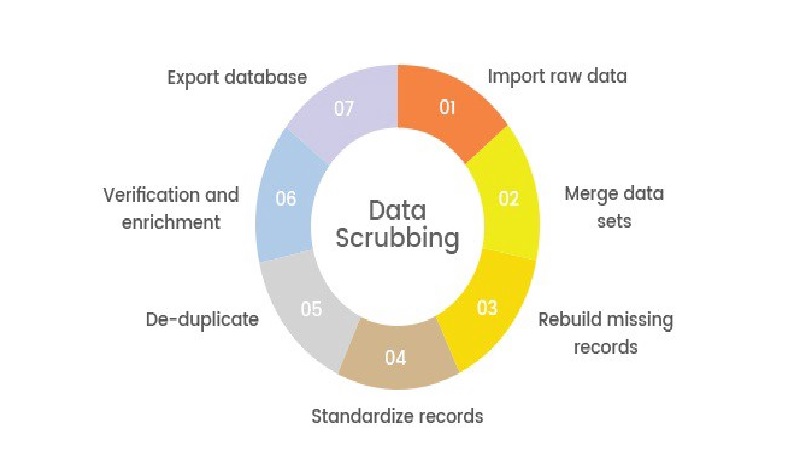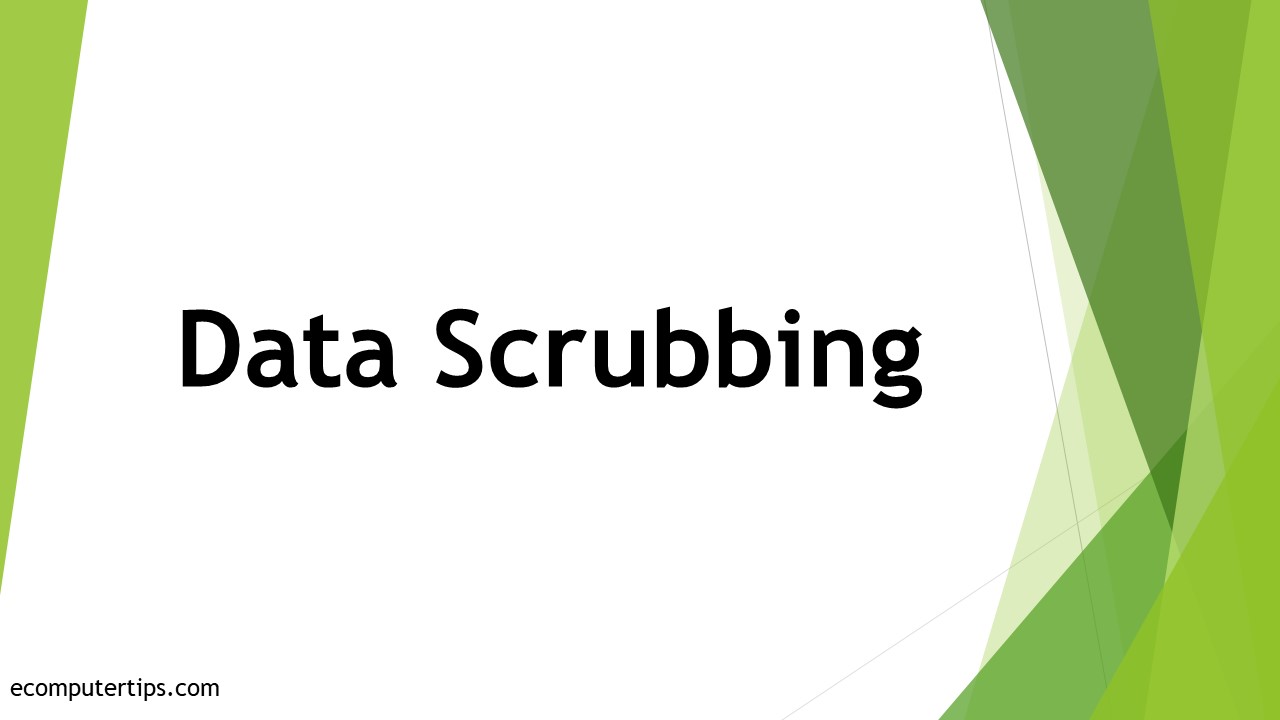In This Article
What is Data Scrubbing?
Data scrubbing refers to the process of correcting errors in a dataset. It is a background process where the content of the memory is checked periodically to detect inconsistencies and rectify the errors to produce a functional copy of data.
In technical terms, it is a Reliability, Availability and Serviceability (RAS) feature and a process to correct bits in the memory that are flipped erroneously due to some kind of transient fault resulting from a physical phenomenon.
KEY TAKEAWAYS
- Data scrubbing is the process of removing or modifying data in a raw database.
- This analytical process enables businesses to ensure better data science and analysis.
- Data scrubbing is done in a few major steps including identifying outliers, fixing structural errors, validating and more.
- The process follows a specific algorithm to perform the basic functions involving reading, amending and writing the correct data.
Understanding Data Scrubbing

Data scrubbing means cleaning the data areas in the computer memory when an application is closed.
This prevents others from getting valuable information such as usernames and passwords.
Data scrubbing is also referred to by different terms such as:
- Data cleansing or cleaning
- Memory scrubbing
However, the verbatim may not be true in all respects.
Typically, data cleansing or cleaning is a process to tidy up data, but it is actually a less involved process.
This basically refers to rectifying or deleting data and is usually done by the data processionals, who do the following:
- Check the dataset.
- Make the necessary corrections.
- Practice good habits for data entry.
In comparison, data scrubbing is a subset of data cleaning that uses actual tools to do deep cleaning over and above making simple corrections.
Steps:
The data scrubbing or cleansing process involves the following six major steps:
- Dedupe or removing repeated data
- Removing irrelevant observations
- Managing incomplete data
- Identifying outliers
- Fixing structural errors
- Validating data
Functions
All these steps typically focus on three basic functions, such as:
- Reading each location of the computer memory by using an Error Correcting Code (ECC) checking logic
- Amending the errors, if any, in the data bits using ECC and recording the signal value of the error check
- Writing the correct data back into the same location using the ECC generation logic
Algorithm
Typically, a specific algorithm is followed for data scrubbing, which updates only those entries that have errors in them. When such an error is detected, the following happens:
- The execution is stopped.
- A test fail is directed and configured.
- An interrupt is issued.
What is the Use of Data Scrubbing?
Data scrubbing is typically used to clean or modify a database and remove data that is inconsistent or incorrect. This important strategy detects and fixes errors to ensure that the database is accurate and remains accurate.
The primary use or objective of data scrubbing can therefore be summarized as a strategy that deals with data in a raw dataset that is either of the following:
- Repeated or duplicated
- Incorrect
- Incomplete
- Inaccurate
- Formatted wrongly
- Erroneous
- Irrelevant
Data scrubbing is ideally a portion of the data preparation process which produces precise and impregnable data that will help in making reliable business decisions and creating exact models and visualizations.
Unclean data in a raw dataset can increase the overall cost of revenue by about 12%.
Data cleansing typically refers to a powerful analytical process that ensures a dataset consists of only valid and accurate data. Scalable, accessible, and repeatable data scrubbing is used for:
- Democratizing data and analytics
- Improving and automating business processes
- Upskilling for transformative results and quick wins
In addition to that, the process also helps the companies to build a strong foundation for the following:
- Deeper data analysis
- Enhanced data science
- Better machine learning
All these will allow the businesses to have a clear vision of their future path or road to success.
Using the data scrubbing process not only produces consistent, well-structured and precise data that helps in making business decisions but it also helps in identifying the areas that need further improvement.
This will, in turn, help significantly in the following:
- Upstream data entry
- Storage environments
- Saving money
- Saving time
Therefore, data scrubbing is useful for any organization both now as well as in the future.
Conclusion
Data scrubbing is an important process to ensure the integrity of data stored in the memory of a computer system.
The process uses Error Correction Codes to verify, amend and write data.
This process helps businesses to do proper data analysis and take intelligent business decisions.
